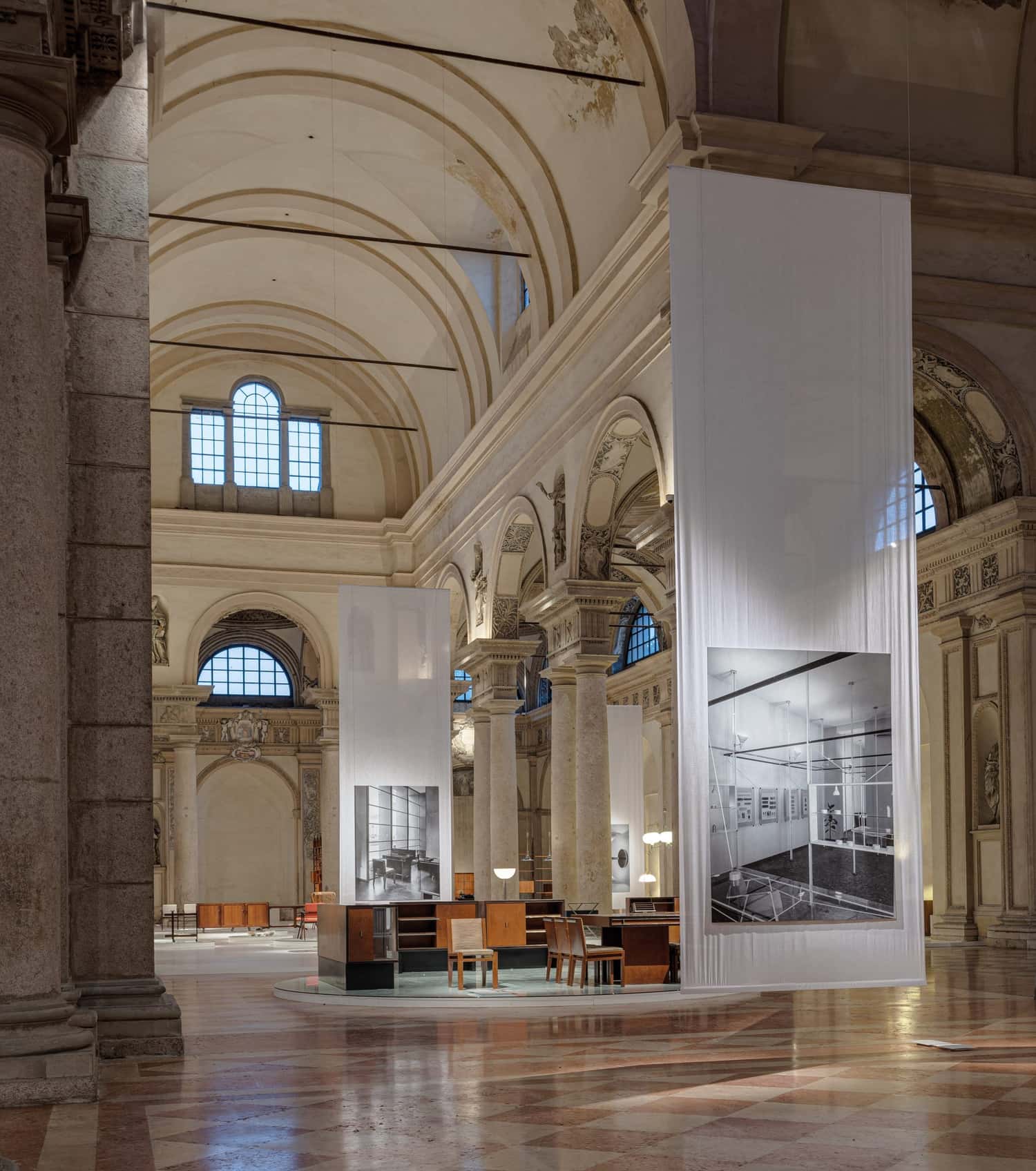Franco Albini. Method and Poetry
From 18 April to 18 June 2023, a retrospective on Franco Albini, one of the most important Italian architects and designers, was held at the Volumia gallery.
La sede espositiva è la suggestiva ex chiesa di Sant’Agostino, le cui dimensioni monumentali ben si prestano alla presentazione della mostra antologica, con gli arredi accompagnati da un ricco apparato iconografico concesso dalla Fondazione Franco Albini. L’allestimento è stato realizzato dallo Studio Albini Associati, con gli apparati descrittivi come vele leggibili su entrambi i lati, creando delle vere e proprie stazioni legate ai mobili. Questo ha permesso la realizzazione di un percorso nel quale il curatore Stefano Andrea Poli ha potuto affrontare al meglio la duplice valenza dell’opera di Albini, caratterizzata da un’attenzione allo studio e alla programmazione da un lato, ma anche una licenza del tutto personale, a tratti poetica. Un’attenzione tutta particolare è stata posta alla capacità dell’architetto e designer di progettare tanto singoli arredi che edifici; ecco allora che i mobili proposti in mostra dialogano con le gigantografie di foto d’epoca, concesse dall’archivio della Fondazione, nelle quale sono illustrate architetture e allestimenti emblematici.
The second part of the exhibition is specifically dedicated to the presentation of some of the most interesting historical pieces. Among the works proposed are the famous bookcases and the renowned Luisa armchair, winner of the prestigious Compasso d’Oro in 1955 and subsequently reissued by Cassina.
In this regard, the gallery owner Enrica de Micheli explains that “The passion for Franco Albini’s work was born in me the first time I met Luisa, the more I observed her the more I recognized a new poetics in this armchair. Far from sumptuous luxury, but with an intrinsic elegance, perfectly studied and elaborated, yet of daily use. I decide to delve into the study of Franco Albini, I discover that he is linked to Piacenza, to our valleys and to the city. During the war he lived next to us, he was a cultured and rigorous architect, he worked with a unique style, with sensitivity, courtesy and reserve. I am amazed and admired and admiration and amazement are the basis of my research, they are the foundations of the thought that has always animated my work. I imagined dedicating an exhibition to him because I want everyone to be able to study his works further and to share the poetic inspiration I feel for him. Volumnia hosts Franco Albini, brings him back to Piacenza”.

And in fact the first part of the exhibition deals with the relationship between the architect and the city in which, together with Franca Helg, Antonio Piva and his son Marco he was active on three different occasions, the most important of which was the design of the Savings Bank tax office building. On this occasion, Albini shows himself to be respectful of the history of the city itself, intervening with a new building next to a pre-existing historic one, leaving no room for camouflage, but rather creating a severe façade modularly punctuated by openings and cladding.
Of particular historical interest is the nucleus of Masonite furnishings, which also occupy a central position in the exhibition itself, belonging to private collections and loaned for the occasion.
“Thanks to the curator, Stefano Andrea Poli, we were fortunate enough to come into contact with the current owners of the furniture that was exhibited at the 1932 Milan Trade Fair, where an exhibition pavilion dedicated to masonite was erected.” Enrica de Micheli clarifies “Albini designs a small building according to the canons of Rational Architecture and various masonite furnishings. It was a new material obtained from the high-pressure processing of wood waste, patented in the United States in 1924 by William H. Mason and produced industrially starting from the end of the 1920s. In the creation of this furniture in industrial material we find what Albini had learned working in Gio Ponti’s studio, as well as putting it into practice he perfects it, putting into practice the cardinal points that he finds in his future works.”
We thank Enrica de Micheli for her availability and courtesy.











